| In 1967, three oval casseroles in solid shades of orange and yellow were sold individually as Town and Country companion items. Boxes were branded as Town and Country but these items lack the Town and Country hex pattern and were only sold in larger volume stores. Items available included the divided dish (063) in light yellow, the 1 1/2 Qt. oval casserole (043) in yellow, and the 2 1/2 Qt. oval casserole (045) in orange. Both the divided dish (063) and 2 1/2 Qt. oval casserole (045) are similar in color to many other opal Pyrex items in the same size. This makes it difficult to find a genuine Town and Country solid-color casserole unless you find one in the box. |
|
However, the 1 1/2 Qt. oval casserole (043) in yellow is an exception. This was the only 043 manufactured in solid yellow throughout all years of opal Pyrex production. If you happen to find a yellow 043 casserole, rest assured it's a great find and a genuine Town and Country solid-colored casserole.
Corning’s distinctive solid-colored opal Pyrex mugs (1610) were produced from 1979-1985 in a wide variety of colors. The back stamp may be branded “Corning,” “Pyrex,” or "Corelle." Mugs were available in Corelle Dimension IV dinnerware sets in the following patterns:
Mug Shots Collection
Interestingly, the solid black mug, released as “Onyx” in Corelle sets in 1984, was available several years earlier to commercial customers. The dark brown mug, officially called “Java,” and the dark green mug were unique to the commercial line and are therefore much harder to find. Curiously, the back stamp for the Java and Dark Green mugs is branded “Corelle” rather than “Corning” or “Pyrex” when, in fact, these were the only two mugs that were not offered with Corelle sets.
Two butter dishes are particularly hard to find. Corning tested the Sandalwood pattern on a butter dish, but only a few prototypes were produced. The other elusive butter dish is plain opal. The opal butter dish is not listed in Pyrex catalogs and appears to have been offered exclusively through a promotion with Kraft Parkay margarine in 1980. An advertisement for the opal butter dish, marketed as “Winter Frost White,” appears in the April 1, 1980 edition of Woman’s Day magazine (pg. 131). In mid-1983, Corning introduced the butter dish in amber glass to match its Fireside product line followed by the clear butter dish from mid-1986 through 1989.
The MysteryAs many collectors know, Corning produced two patterns named Verdé during the late 1960s - early 1970s. The first Verdé pattern, available in shades of avocado with opal lids containing an olive pattern, appears in dealer catalogs and advertisements. But the second version is completely absent from all marketing, advertising, and dealer catalogs raising many questions: Why was a second version of Verdé created? Why wasn't it marketed or advertised in annual Corning dealer catalogs? Was it only available at certain retailers? How was it distributed? We now know the answer! Verdé Version 1: Verdé (Olives)The first version of Verdé contained solid-colored bowls in progressive shades of green. When launched in 1967, only the divided dish (063) and oval casseroles (043 and 045) contained opal lids as shown in the 1970 Dealer Catalog below. By 1972, the 470 Small Round Casserole Set (471, 472 and 473) and 480 Large Round Casserole Set (473, 474 and 475) also contained opal lids with the olive design. Boxes stated the pattern name as "Verdé... The New Avocado Colors." The product suffix code was "-16" as shown in the catalog. Verdé Version 2: Verdé (Square Flowers)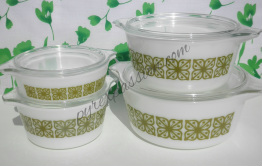 The second version of Verdé, produced during the same time period, contained a square flower design on most items. Mixing Bowls (401, 402, 403 and 404) and Cinderella Bowls (441, 442, 443 and 444) alternated with solid avocado bowls and the square flowers design. Plain, undecorated boxes, stated the pattern name simply as "Verdé" with the product suffix code "SP-16" attached to the item number. This alternate Verdé pattern was widely distributed based on the ease in which collectors can find the pattern in thrift shops and antique stores. 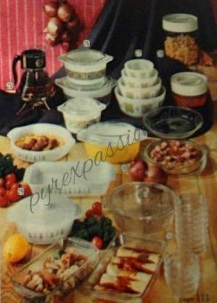 Image from 1970 Top Value Gift Catalog. Image from 1970 Top Value Gift Catalog. We now know that the second Verdé pattern was distributed through stamp programs popular in the 1960s and early 1970s. Drugstores, grocery stores, and gas stations distributed stamps to customers as part of their loyalty program. In exchange for stamps, customers could purchase items at redemption centers located throughout the country. Top Value stamps - a major competitor to S&H green stamps - were distributed at many merchants, such as Kroger grocery stores. The second Verdé pattern was available in exchange for Top Value stamps. For example, the 480 Set (473, 474, 475) with clear lids was available in 1970 by redeeming 2 1/2 stamp booklets. PYREX Mystery Solved! Orange Butterprint was officially Pumpkin Butterprint offered in 196512/7/2014
 Pumpkin Butterprint Cinderella Set. Pumpkin Butterprint Cinderella Set. Butterprint was a popular Pyrex pattern offered from 1957-1968. Typically, the pattern appeared in white or turquoise on a contrasting white or turquoise background. However, the cinderella bowl set consisting of a 441, 442, 443, and 444 was also available in orange on a white (opal) background. The orange variation does not appear in Corning catalogs and had remained somewhat of a mystery in terms of when it was produced and how it was distributed. The set is somewhat hard to find indicating it was likely produced for a short amount of time. In PYREX Passion: The Comprehensive Guide to Decorated Vintage PYREX, the date estimate was given as the mid-1960s based on the orange color scheme which was available on other patterns, such as Town and Country, during the same time period. As it turns out, the date estimate was accurate. However, Flickr.com member, AquaOwl, helped solve the mystery. 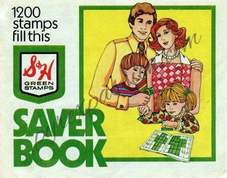 Orange Butterprint, officially named Pumpkin Butterprint, was offered as an item in the 1965 S&H Green Stamp catalog. For 1 1/2 completed green stamp booklets, essentially 1800 green stamps, customers could purchase the set. Sets were boxed in plain boxes with the item number 440-SP. The 440 references the set number, while the "SP" may indicate "special" or "stamp program." The set was available throughout 1965 and until the catalog expired on April 30, 1966. Holiday Promos Offered in 1960-1961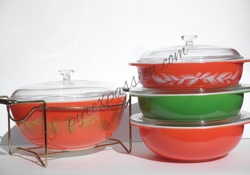 Golden Leaf, Holiday Casserole, Green, and Red. Golden Leaf, Holiday Casserole, Green, and Red. Throughout the years, Corning produced several holiday-themed items. The first items were offered in 1960. The Golden Leaf Casserole was a 404 mixing bowl with knob lid (626) and brass mounter, ideal for punch, salads, or hot dishes (far left in photo). The other item offered in 1960 was the Holiday Casserole, a 2 Qt round (024) casserole with knob lid (top right in photo). Two other 2 Qt round casseroles are ideal for the holidays: Bright Green and Bright Red. The exact production dates for these two casseroles is unknown, but likely in the 1970s. 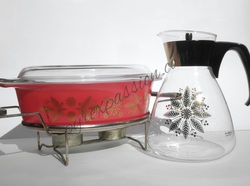 Golden Poinsettia with matching carafe. Golden Poinsettia with matching carafe. The Deluxe Buffet, with a Golden Poinsettia design, was the only other holiday item specifically produced for the consumer market. The 2 1/2 Qt oval casserole (045) with dual candle warmer was available in late 1961. A matching carafe was sold separately. The Golden Pine (not shown) 2 Qt Square Space Saver Casserole (575) was also available in 1961. Although perfect for a holiday table, the Golden Pine design, which included gold pine cones on a white background, had broader appeal throughout the year. Corning Employee Holiday Gift ItemsIf you were lucky enough to work for Corning Glass Works in the 1960s-1980s, you likely received some wonderful holiday gift items, only available to Corning employees. Currently, these items are in great demand with collectors. Dozens of employee holiday gifts were distributed through the years, including those above.
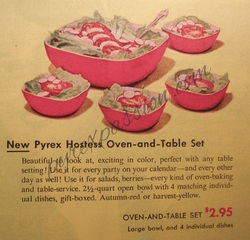 1949 Ladies Home Journal Advertisement. 1949 Ladies Home Journal Advertisement. Corning produced opal Pyrex Hostess Sets from 1949-1953 to support the growing trend of entertaining guests and having dinner parties. Hostess Sets were described in 1949 advertisements as “autumn-red” and “harvest-yellow.” Sets were sold as: Hostess Oven-and-Table Set (Large Hostess Set) 025 2 ½ Qt Serving Bowl (no lid) and four 12 oz. (410) Ramekins. Hostess Set (Small Hostess Set) 015 1 ½ Qt Serving Bowl (with lid) and four 7 oz. (407) Ramekins. The launch of the Hostess Oven-and-Table Set was advertised in the September 1949 edition of Ladies Home Journal, while the smaller Hostess Set was out in time for Christmas 1950. The ramekins and serving bowls were also sold separately. When purchased individually, a lid was included with both sizes of serving bowls. Hostess Dishes Reappear in 1959 1959 Cinderella Snack and Dip Set. 1959 Cinderella Snack and Dip Set. Although yellow and red hostess bowls were discontinued in 1953, the shape would sporadically reappear throughout the 1950s, most notably in the 1959 promotional Snack and Dip Set in turquoise. This set remains extremely popular with collectors, typically commanding over $100 at online auction sites. Hostess Dish Variations or Test PatternsOther Hostess Bowls in unique colors have also turned up. Although their exact dates of production are unknown, most are presumed to be from the 1950s. These variations are quite hard to find. Variations for the large 2 1/2 Qt hostess dish include: Dove Gray, Pink Desert Dawn, pastel Pink, and Charcoal (made in Delphite Blue, rather than opal). Variations of the smaller 1 1/2 Qt hostess dish have been found in bright turquoise, a different shade than the turquoise from the Snack and Dip Set, and forest green. The forest green is unique in design, with a clear lid.
In the early 1970s, Corning launched a full-line of PYREX Compatibles to coordinate with Corelle Livingware patterns. The first salt and pepper sets in the PYREX Compatibles line, all launched in 1972, were Spring Blossom Green, Butterfly Gold, and Snowflake Blue. When these items made their debut, salt and pepper sets were sold in white, applied to clear glass, with the matching design. The white paint, which was prone to chipping, was replaced with clear glass in 1975. The white background was available until 1974 on Spring Blossom Green, Butterfly Gold, Snowflake Blue, and Old Town Blue. Old Town Blue was somewhat unique in that the PYREX tabletop items did not have a line of matching PYREX mixing and bakeware sets. However, marketing materials after 1976 advertised that Old Town Blue was an ideal companion to the newly released PYREX Homestead pattern.
White Background S&P Sets Spring Blossom Green: 1972-1974 Butterfly Gold: 1972-1974 Snowflake Blue: 1972-1974 Old Town Blue: 1974 In 1975, the new clear background replaced the white background on Spring Blossom Green, Butterfly Gold, Snowflake Blue, and Old Town Blue. Snowflake Blue with a clear background was only available in 1975, the year in which the pattern was discontinued. Autumn Harvest, although not a PYREX Compatibles product line offered tabletop ware, including a clear salt and pepper set from 1980-1983. Clear Background S&P Sets Spring Blossom Green: 1975-1983 Butterfly Gold: 1975-1983 Snowflake Blue: 1975 Old Town Blue: 1975-1983 Woodland: 1978-1983 Autumn Harvest: 1980-1983 Kitchens of the 1960s saw many new technologies to make food preparation easier. Electric can openers, blenders and food processors were new and inexpensive gadgets. Dishwashers gained popularity through the decade, making clean up almost effortless. For homeowners who could not afford to install a dishwasher in the cabinetry, portable machines were available that could be connected to the faucet and moved out of the room when not in use. Refrigerators had been around since the 1920s, but by the 60s they were improved with new technology such as a frost-free freezer compartment. Most refrigerators of the decade had the freezer compartment below the refrigerator, a trend that is gaining popularity again today. Although technology was making food preparation faster and easier, kitchen design of the 1960s began to reinterpret old-style colonial motifs--and eagles were all the rage. Eagles were featured prominently on two PYREX patterns: Early American and Federal Eagle. The Launch of Early American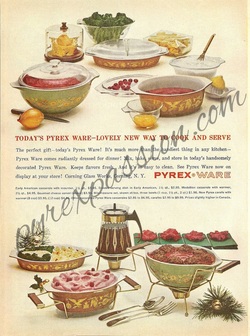 In 1962, Corning launched a new PYREX pattern called Early American. The Early American decoration was in Colonial brown with 22-karat gold decoration and also appeared in white with brown decoration. Many items were available including mixing bowls, Cinderella bowls, refrigerator sets, divided dishes, round casserole sets and other bake ware. Many promotional items were also produced, such as Chip and Dip Sets and oval casseroles with brass cradles and walnut handles. The Early American pattern proved to be very successful. It was one of the longest running of all PYREX patterns, lasting nearly a decade. Early American Beverage Serving Set (1967)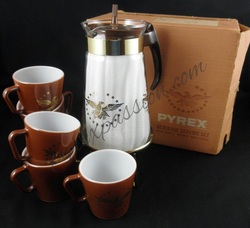 In 1967, Corning produced a PYREX Beverage Serving Set with an eagle motif. Although the design is somewhat different from the Early American design, the set was produced as a companion item and marketed as a "12 Cup Carafe with Candle Warmer and 6 - 10 oz. mugs with Early American decoration." The solid brown mugs have a gold eagle encircled in stars. This same design has recently reappeared on turquoise blue mugs with the gold eagle. It is possible that a turquoise beverage serving set was also produced. Many online auction sites mistakenly refer to the Early American mugs as "Federal Eagle Mugs." Although similar, both the eagle design and mug style are noticeably different. Federal Eagle Product Line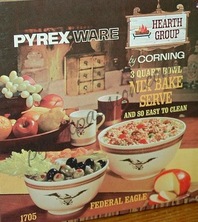 The Federal Eagle product line was launched in 1967 and only lasted a few years. The pattern was available on a limited number of items including two sizes of mixing bowls (1 1/2 Qt and 3 Qt) as well as two styles of mugs. The mugs had a rounded handle, unlike the the "D-handle" mugs produced for Early American. One Federal Eagle mug was available in beige with a gold eagle and gold band at the bottom while the other style was solid brown with a gold band at the bottom. |
Article Categories
All
Archives
September 2023
|
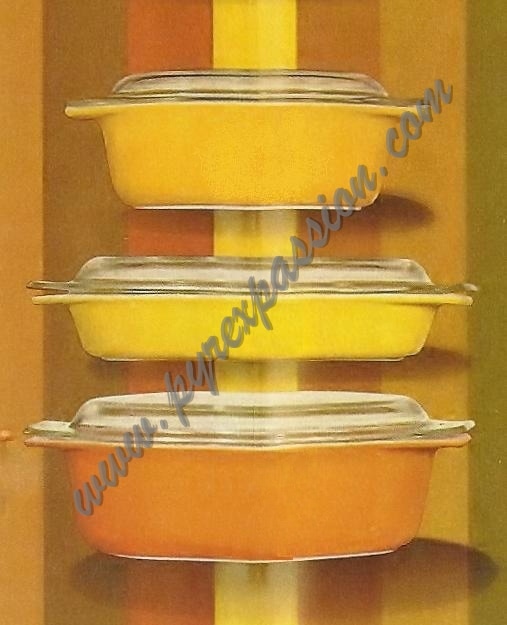

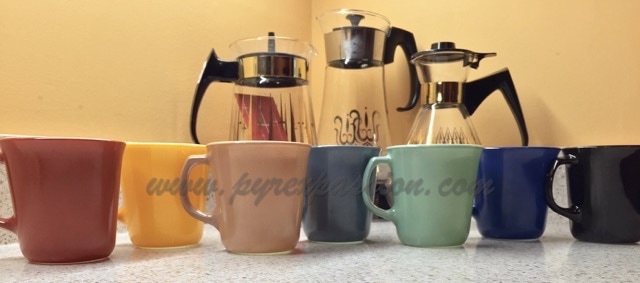
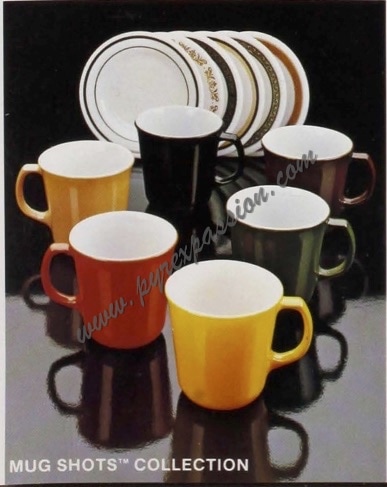
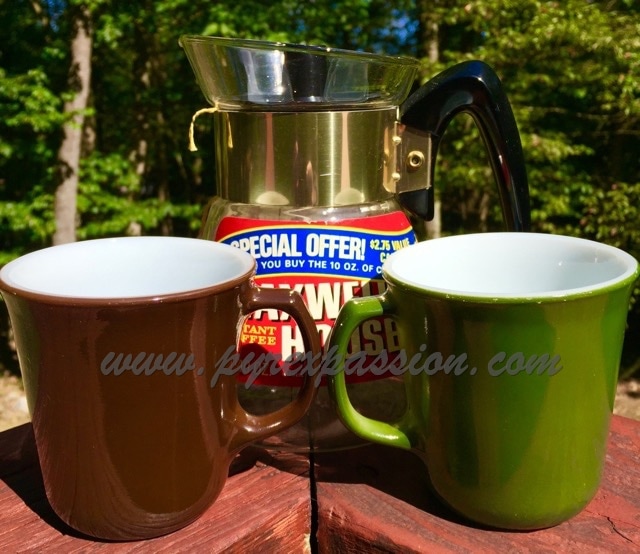
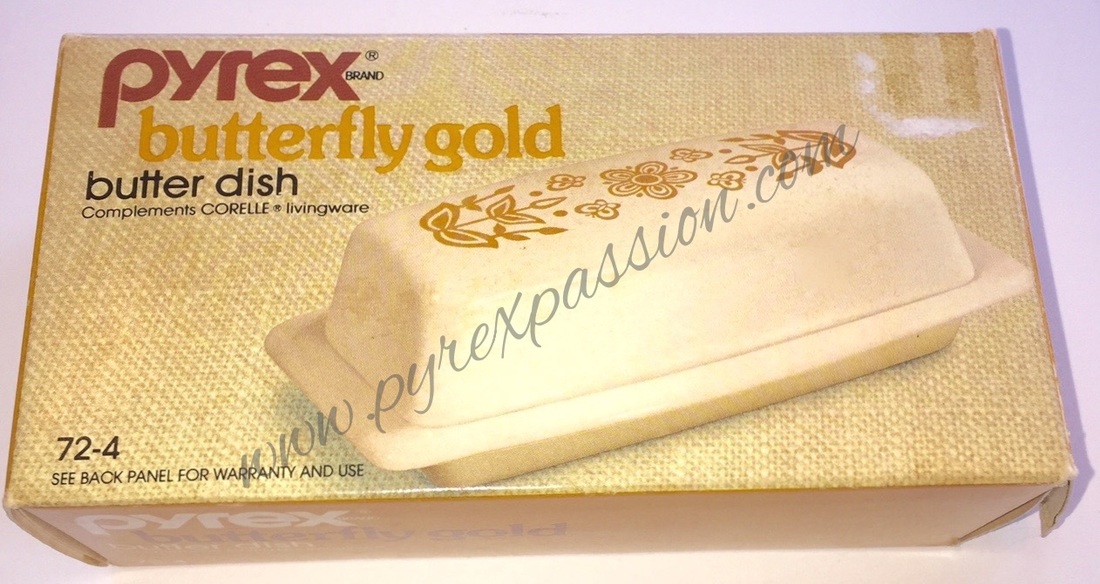
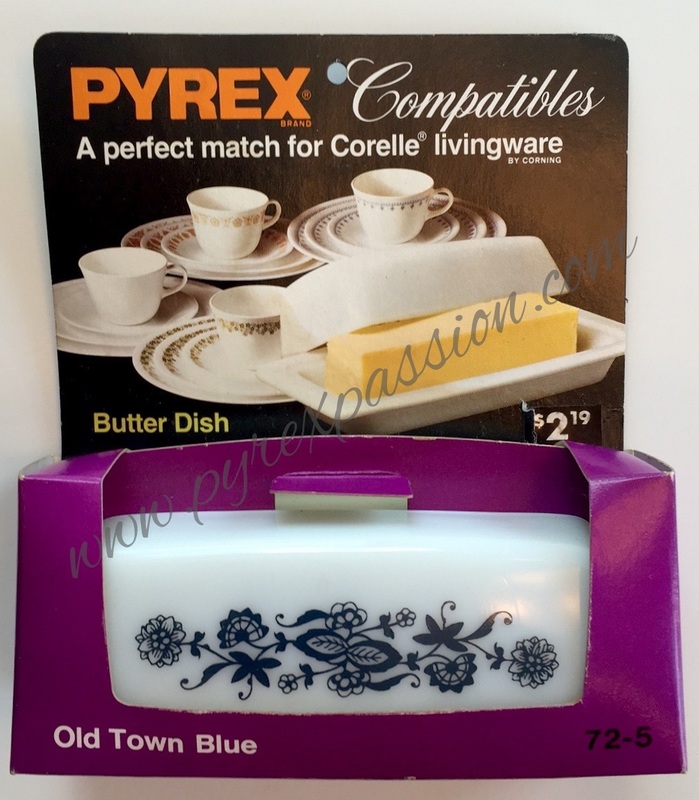


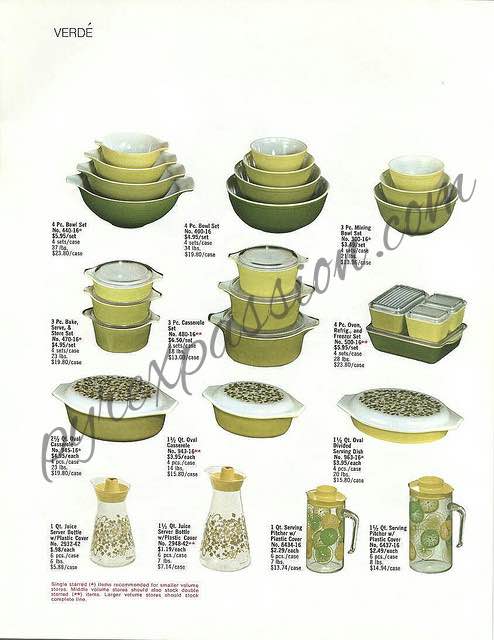
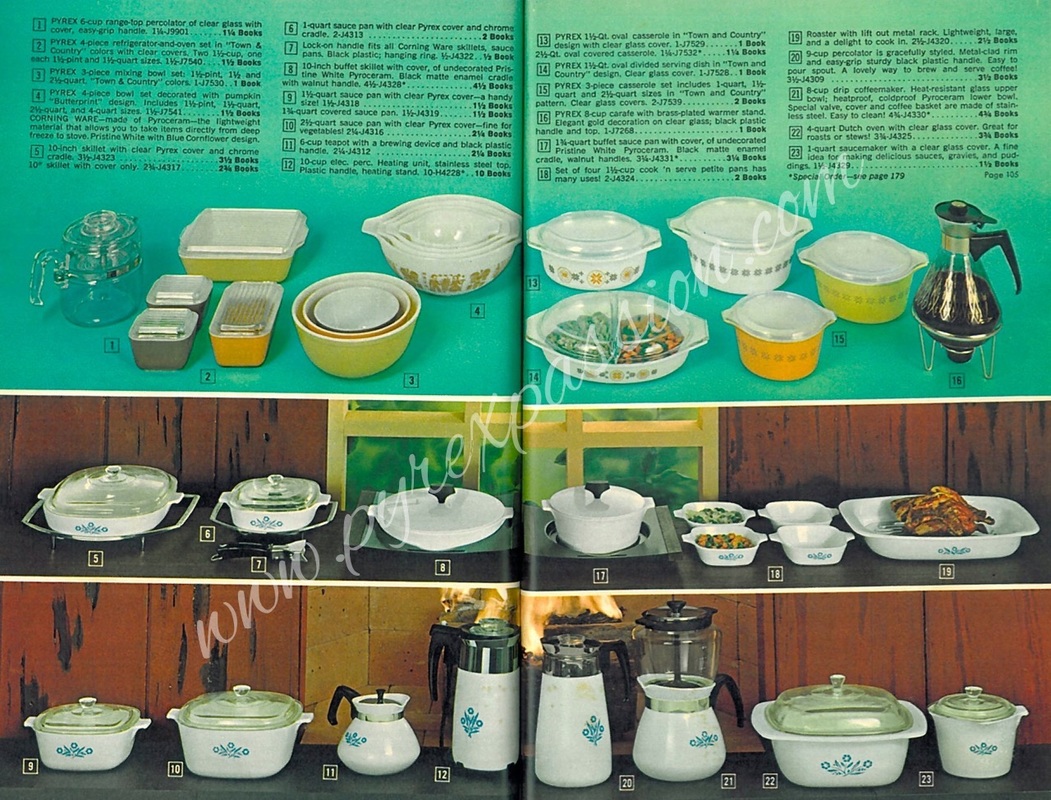
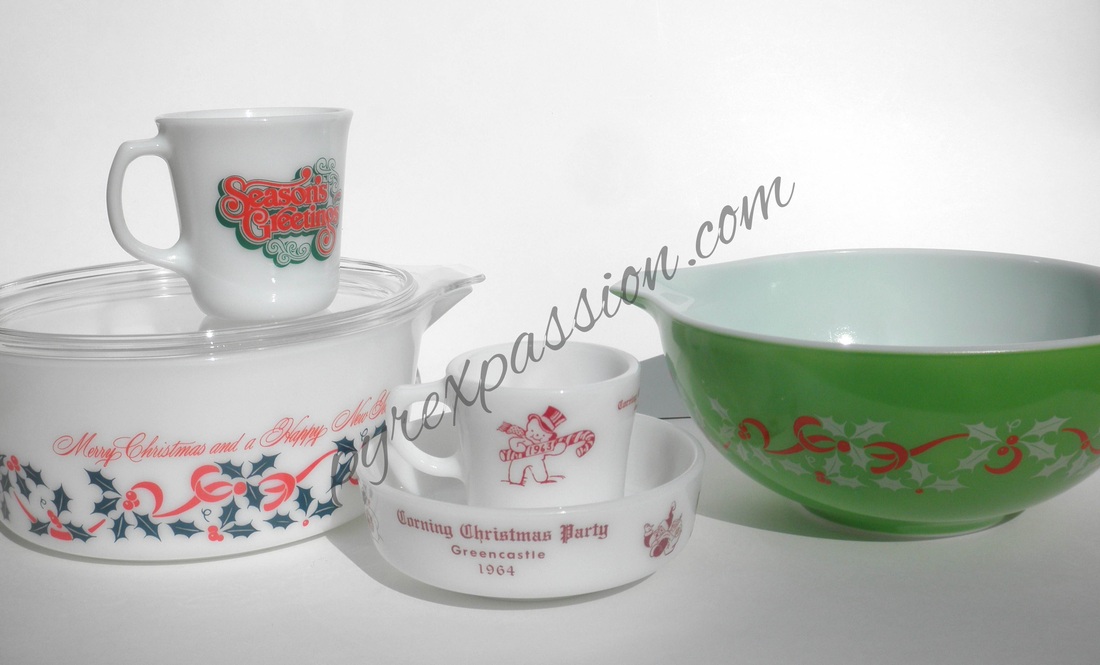
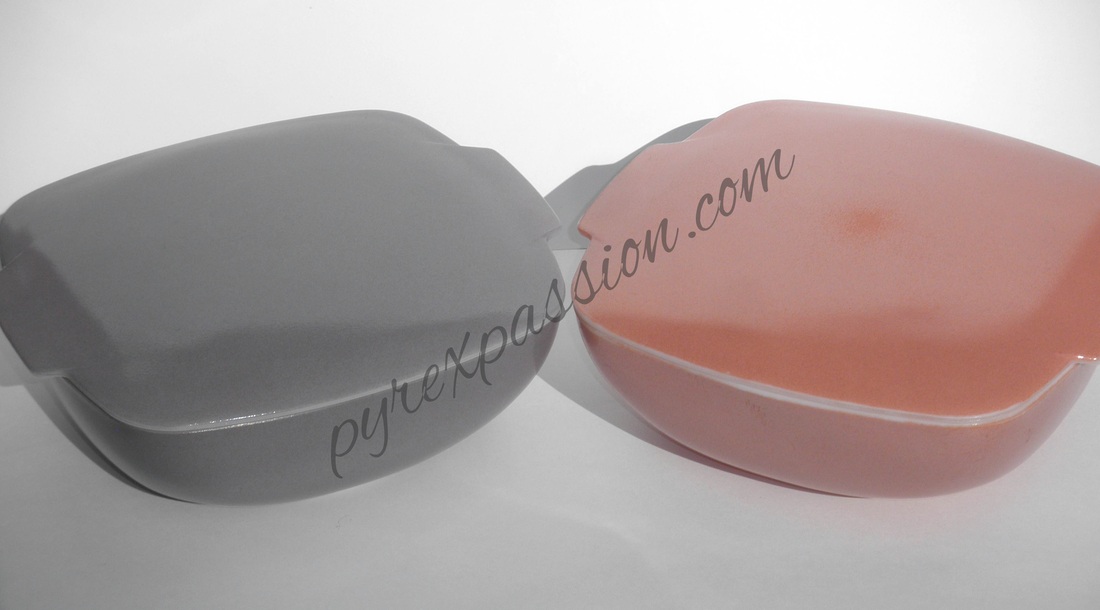
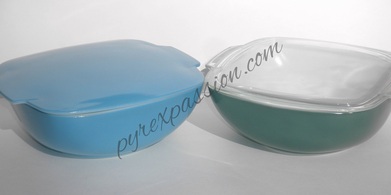
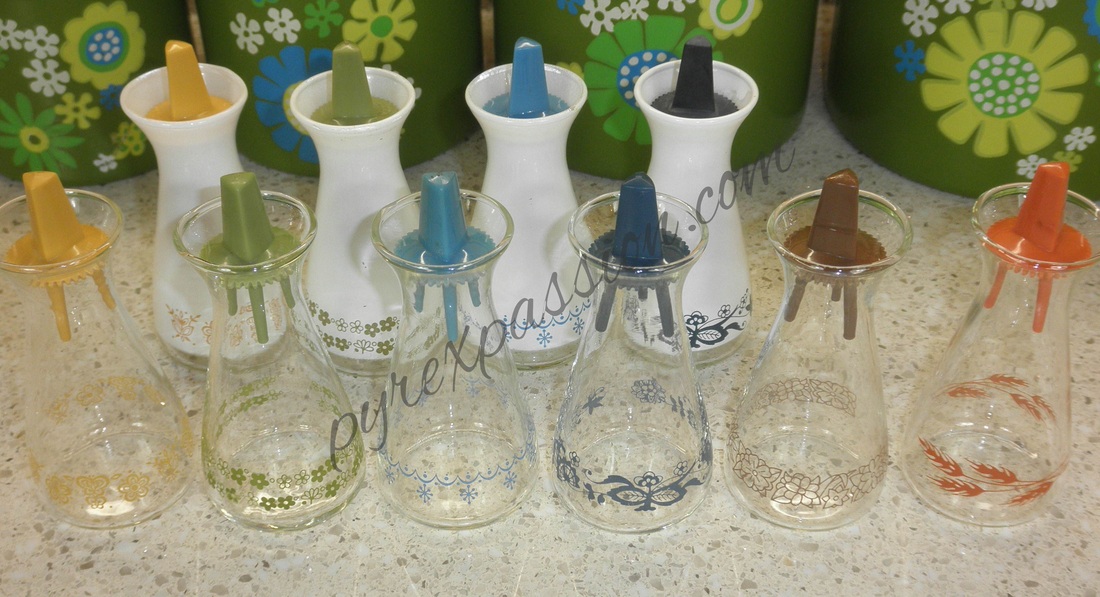
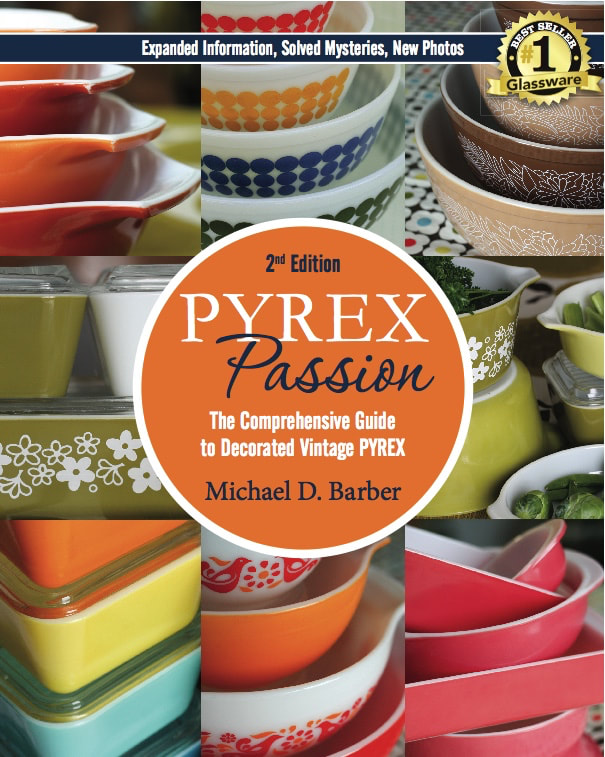
 RSS Feed
RSS Feed